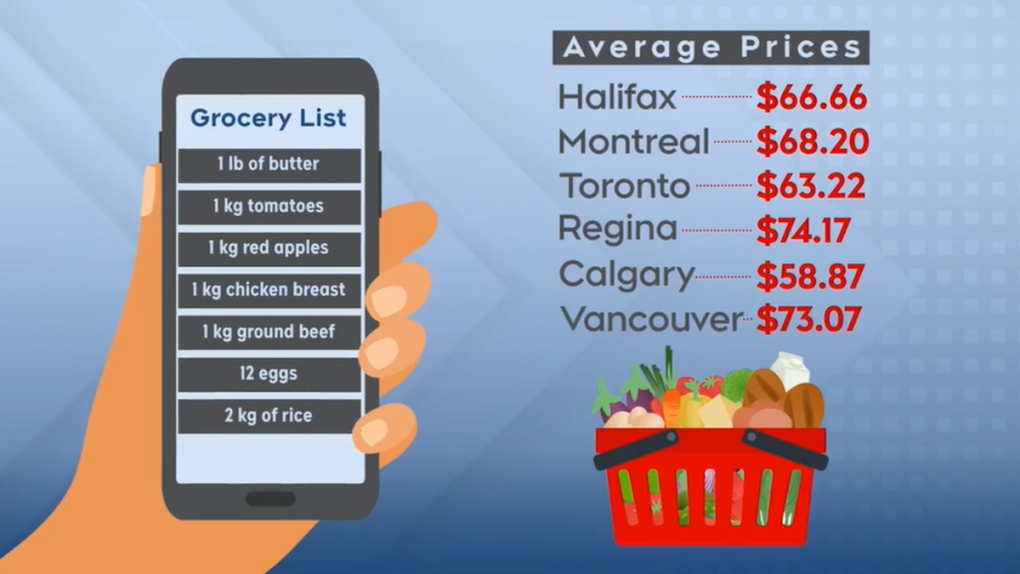$10 dollars for butter. $13 dollars for rice. $27 for chicken.
Where you live plays a big factor in what you pay at the grocery store. And while it’s no secret the same item may have a different price depending on the store, city or province, we wanted to see just how big the differences are, and why.
CTV reporters went shopping at stores in Halifax, Montreal, Toronto, Regina, and Vancouver, and collected data from a flyer in Calgary. Each person shopped at two different stores and bought the same basket of goods at each: a pound of butter, a dozen eggs, chicken, ground beef, rice, apples and tomatoes.
The lowest bill was in Calgary with an average cost of $58.87. Calgary had by far the cheapest price for a kilogram of boneless skinless chicken breasts at $13, but was on par with many other provinces for the price of a kilogram of lean ground beef at $17.
Regina’s grocery bill was the highest at an average of $74.17, with the cost of chicken breasts, butter and two kilograms of rice above average.
Vancouver was not far behind Regina at $73.07. Chicken breasts were the most expensive in Vancouver at an average of $26 for one kilogram.
The grocery bills in Halifax, Montreal and Toronto were all between $63 and $68 dollars, with the price of eggs in Halifax among the highest in the country.
“We’re all prisoners of our own geography,” says Sylvain Charlebois, a food policy professor at Dalhousie University.

He says consumers on the coasts tend to pay more as they are further away from major processing centres, and everything has to be trucked or transported by rail. Smaller cities like Regina and Halifax also tend to see higher prices as there is less competition, especially from ethnic and independent grocers.
“Typically, I would say, Montreal and Toronto are incredibly competitive markets and you tend to save more,” he says. There are also more ethnic and niche independent players in southern Ontario that drives up competition.
Charlebois says adding there’s less competition where he lives in Halifax and the transportation costs are huge, both of which can drive up food costs.
“Distances are killer when it comes to transportation and energy costs,” he says. “As soon as gas goes up, you know you are going to get dinged at the grocery store. That’s how it works.”
But prices can even vary by neighbourhood, even at stores that are owned by the same company.
“Sometimes you can actually have two stores owned by the same operator with two very different pricing strategies,” Charlebois says.
For many, these discrepancies and fluctuations mean shopping around.
“I’m on a fixed income. When you’re retired, it’s tough,” says Graham as he walked into a Toronto Loblaws.
Canadian grocers have been under fire for more than two years over the price of food and corporate profits, with customers staging a boycott of Loblaw-owned stores this month to voice their frustration.
The federal government says it is trying to coax international grocers to set up shop in Canada, with Industry Minister Francois-Philippe Champagne saying this week he “continues to look at whether there are foreign deep-discounters that would be interested in the Canadian market.”
Champagne acknowledges new players in the market may not be a panacea, but with five major players dominating the market, he says it’s worth a try.
“Listen, are we going to succeed? I don’t know,” Champagne said. “Is it worth the effort? Definitely. We’re going to keep on pushing.”
There is some good news for consumers when it comes to food prices, which have been in disinflation since early 2023. Charlebois says based on the current trends, food prices could actually start to decrease by fall.







